Affiliate disclosure: This post may contain affiliate links. Please see our Privacy Policy.
Rhubarb jelly is a special spring treat, and naturally tart rhubarb is perfect for a sweet-tart jelly.
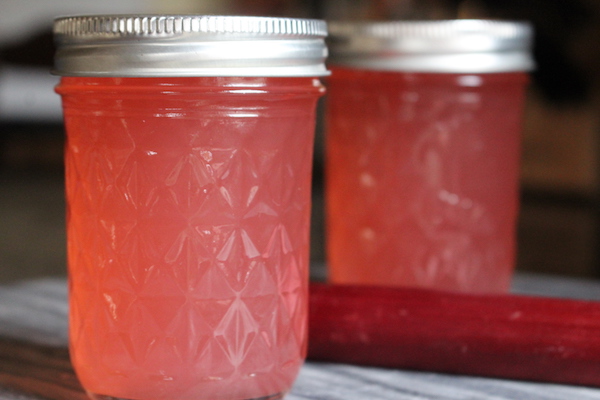
Most year’s I’m all about chunky jams with big hunks of fruit. My little ones though, they love jelly.
I tried to convert them, but I found myself time and again eating my own batches of chunky fruit low sugar jam while they begged for full sugar batches of jelly.
I’m not complaining, I was happy to have a full batch of rhubarb jam and another of strawberry rhubarb jam to myself, but with more rhubarb coming in from the garden, it’s time to make a batch of smooth kid-approved rhubarb jelly.
Knowing there’s jelly on the way is enough to get a little help harvesting the rhubarb…
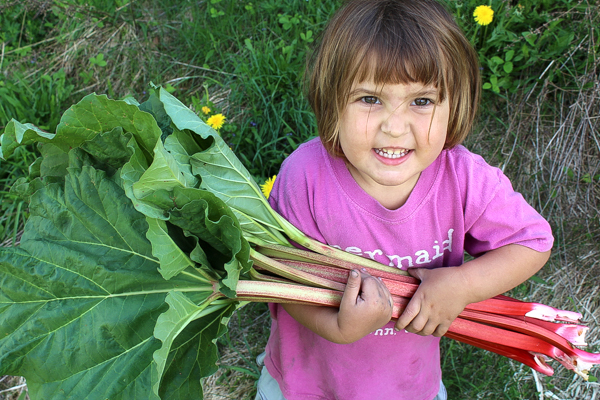
Rhubarb’s actually a vegetable that we treat as a fruit, and it doesn’t contain any meaningful amount of pectin. To make rhubarb jelly, you’re going to need to add commercial pectin.
I came across a recipe for rhubarb marmalade from the early 1900s that uses oranges as a pectin source, but it also has more orange than rhubarb. I want a simple rhubarb jelly, no citrus, please.
Extracting Juice for Rhubarb Jelly
Whether you’re using a low sugar or full sugar recipe, the first step to making rhubarb jelly is to extract the juice from the rhubarb.
Start by placing about 2 pounds of chopped rhubarb in a saucepan with a quart of water (4 cups). Bring the mixture to a boil, then turn down the heat to a simmer. Simmer the mixture for 20 minutes, until the liquid has turned a bright pink and the rhubarb has completely fallen apart.
Pour the rhubarb into a jelly bag, or a fine-mesh strainer lined with cheesecloth. Allow the mixture to drain for at least 2 hours, preferably a bit longer (like 4 to 6).
Do not press the juice out of the fruit, it’ll cloud the finished rhubarb jelly, and the yield is only ever so slightly more. Not worth it.
After two to four hours of draining, you should have about 4 cups of rhubarb juice.
Choosing Pectin for Rhubarb Jelly
There are a number of different pectins on the market these days, and I’ve worked with them all at one point or another. This year I made two different batches of rhubarb jelly, a low sugar batch with Pomona’s pectin and a standard sugar Sure Jel batch.
Ball classic flex batch pectin and liquid pectin are also fine choices, depending on what you have on hand.
I’m going to give you instructions for making rhubarb jelly with all four types of pectin. Each recipe starts with 4 cups of extracted rhubarb juice.
Most standard sugar recipes require around 6 cups of sugar to allow the pectin to gel, but Pomona’s low sugar pectin will work just fine with as little as 1/2 cup of sugar to help distribute the pectin and prevent clumping. Still, if you’re rhubarb is tart you may want to use a bit more for better flavor.
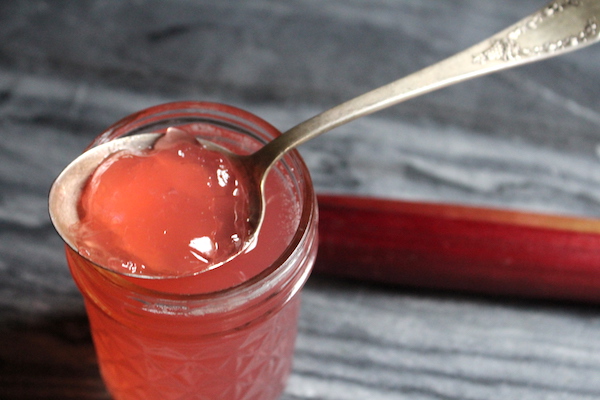
How to Make Rhubarb Jelly
Pour the strained rhubarb juice into a saucepan and bring it to a boil. Add the sugar and pectin.
Liquid pectin pouches should be added directly to the juice, but powdered pectin can be mixed in with the sugar so it evenly distributes in the juice and doesn’t clump.
Pomona’s pectin is two-part pectin that’s made for low sugar recipes. Liquid calcium water is first added to the juice, and the powdered pectin is mixed into the sugar to prevent clumping. Both parts come together to help the jelly gel without a lot of sugar.
Regardless of the pectin type, bring the mixture back to a hard boil and cook the juice/sugar/pectin mixture for 1-2 minutes, stirring constantly.
Turn off the heat and ladle the rhubarb jelly into prepared canning jars, leaving 1/4 inch headspace.
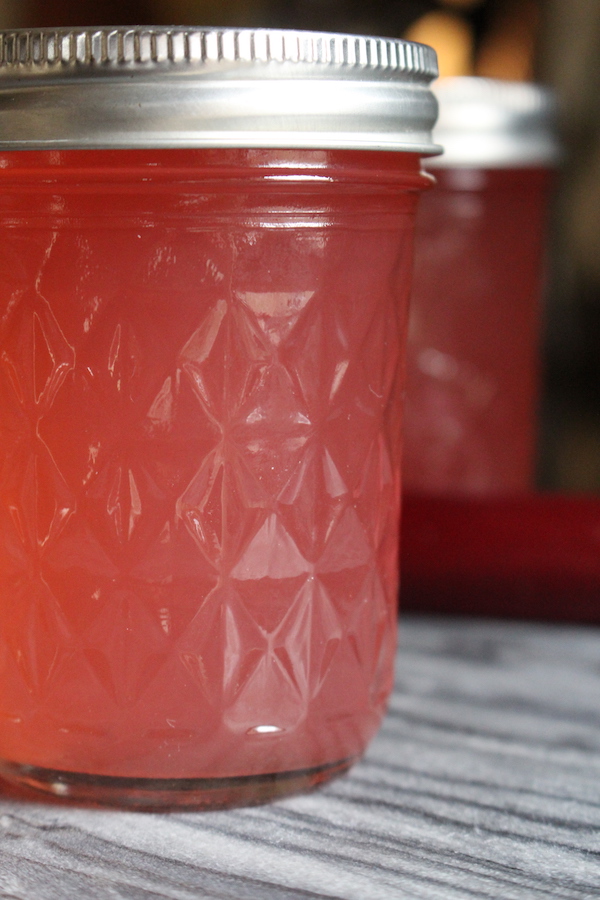
Canning Rhubarb Jelly
It’s perfectly fine to make a refrigerator or freezer jelly and skip the canning step. Just allow the jam to set at room temperature overnight and then store it in the refrigerator (for a few weeks) or freezer (for a few months).
While canning is completely optional, it’s actually really easy to can rhubarb jelly so you can enjoy it year-round.
Be sure you’re using approved canning jars with two-part canning lids, and ladle the hot rhubarb jelly into the canning jars. Leave 1/4 inch headspace and then cap with 2 part canning lids.
Process the rhubarb jelly in a water bath canner for 10 minutes before removing the jars to a towel on the counter to cool. Store any unsealed jars in the refrigerator for immediate use, but any sealed jars will keep in the pantry for a year or more.
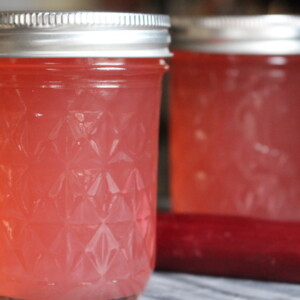
Rhubarb Jelly
Ingredients
Rhubarb Juice
- 2 lbs rhubarb, chopped into 1” pieces
- 4 cups water
For Full Sugar Rhubarb Jelly
- 4 cups rhubarb juice
- 6 cups sugar
- 1 box Powdered Pectin, 1.75 ounces or 6 Tbsp, such as Sure Jel
Instructions
- Place the chopped rhubarb and water in a saucepan. Bring the mixture to a hard boil and then turn the heat down to a simmer.
- Simmer rhubarb and water for about 20 minutes, until the rhubarb has completely fallen apart.
- Pour the rhubarb mixture into a jelly bag (or cheesecloth-lined fine mesh strainer). Allow the rhubarb juice to drain for at least 2 hours, or until you've collected 4 cups of juice.
- Pour the rhubarb juice back into a saucepan and bring it to a boil.
- For a full sugar recipe, add the pectin and bring to a boil for one minute.
- Add the sugar and return to a boil for 1 minute.
- Turn off the heat and then pour the finished rhubarb jelly into prepared jars, leaving 1/4 inch headspace.
- Store the preserve in the refrigerator (or freezer) for immediate use, or process in a water bath canner for 10 minutes for a shelf-stable rhubarb jelly.
Notes
Nutrition
Nutrition information is automatically calculated, so should only be used as an approximation.
More Rhubarb Recipes
Still have more rhubarb in the garden?
- Rhubarb Wine
- Small Batch Rhubarb Mead (honey wine)
- Rhubarb Upside Down Cake
- Amish Rhubarb Custard Pie
- Strawberry Rhubarb Pie
More Easy Jelly Recipes
Looking for more canning recipes to keep your jelly jars filled?
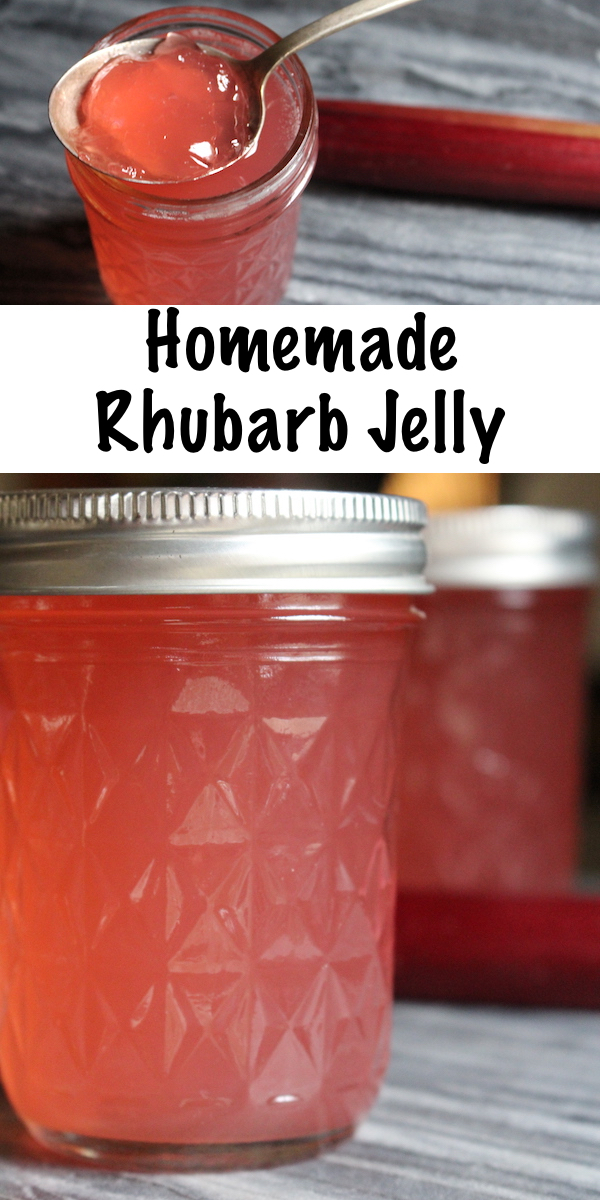
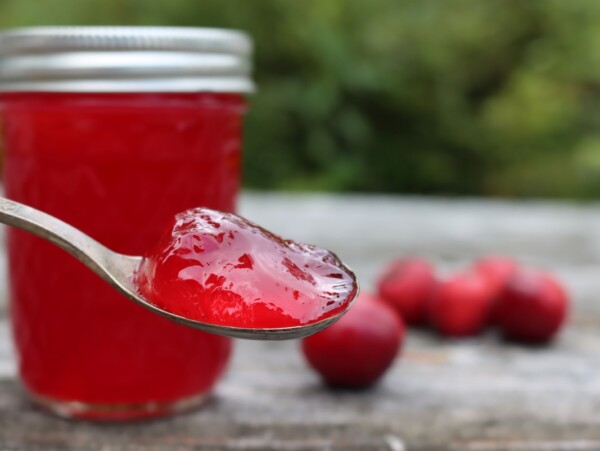
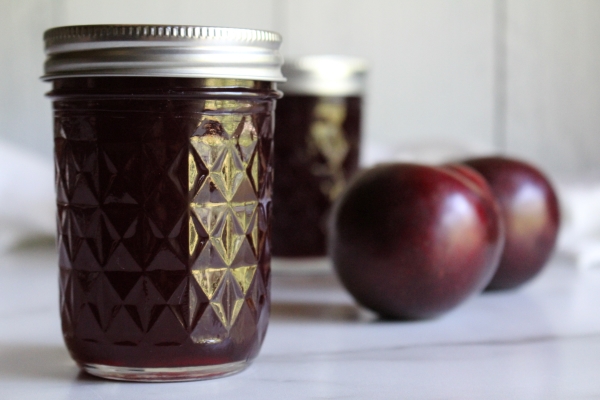
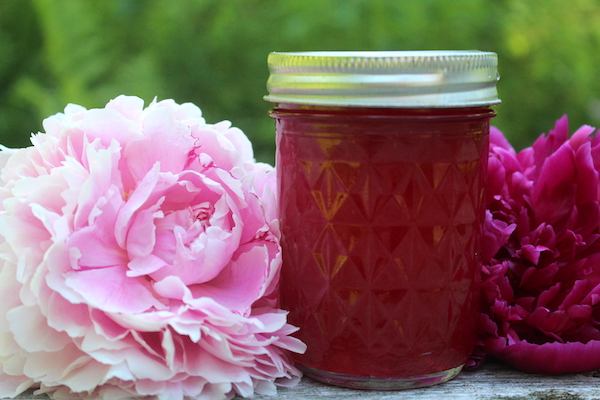
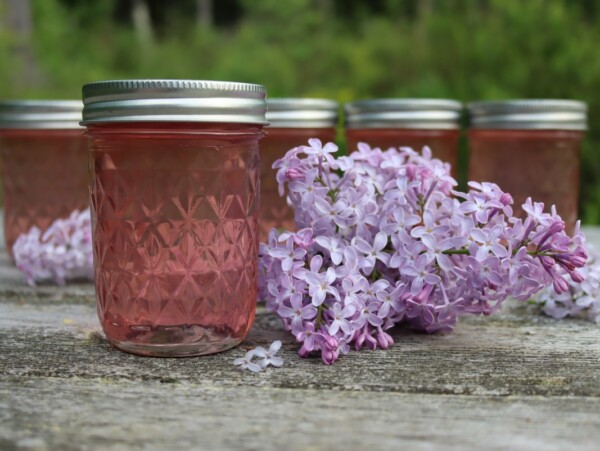
I often mince and freeze my rhubarb for a little taste of summer during colder months, and when I go to use it in recipes I always need to strain it after thawing. So this jelly helps me make great use of what would otherwise be leftovers. Thanks for posting something so simple and clear.
Glad it’s helpful!